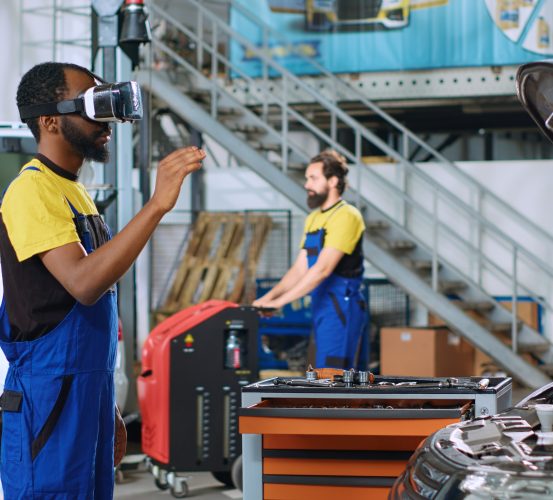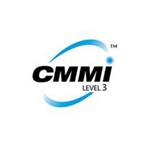Introduction
Workforce training has entered a new era of transformation. Traditional classroom learning and static e-learning models are gradually giving way to immersive, interactive experiences powered by Virtual Reality (VR) and Augmented Reality (AR).
In 2026, businesses across sectors — including manufacturing, healthcare, logistics, energy, construction, retail, and defense — are increasingly exploring immersive technologies to make learning more experiential, accessible, and efficient.
While VR and AR do not replace traditional training, they act as powerful complements, helping employees practice real-world scenarios in safe, simulated environments.

Why Industries Are Turning Toward Immersive Learning
1. Realistic Skill-Based Learning
In manufacturing and industrial environments, VR allows employees to operate virtual machinery, understand complex workflows, and perform assembly simulations before entering the actual workspace. This hands-on approach helps them develop familiarity in a risk-free setting.
2. Safe and Controlled Training Environments
In high-risk sectors such as aviation, construction, energy, and mining, immersive modules can recreate challenging conditions without endangering workers. Employees can learn safety protocols, emergency responses, and equipment operations in a secure virtual setup.
3. Consistency Across Global Teams
Large enterprises often face challenges in maintaining training consistency across locations. VR and AR platforms make it possible to deliver standardized learning experiences, ensuring uniform quality and performance across the workforce.
4. Cost and Resource Optimization
Once developed, immersive learning modules can be reused multiple times across departments. This reduces the need for repeated in-person sessions, equipment wear, and travel costs.
5. Enhanced Engagement and Learning Retention
Interactive simulations can make learning more engaging compared to traditional methods. Employees actively participate in hands-on experiences, improving their understanding and retention of key processes.
Key Industry Applications of VR and AR in Training
Manufacturing and Industrial Automation
The manufacturing sector has been one of the earliest to explore immersive training. Workers can practice operating heavy machinery, simulate production line procedures, and perform maintenance tasks virtually. These simulations can help reduce trial errors and improve overall operational readiness.
Healthcare and Life Sciences
VR and AR are being used for procedural demonstrations, anatomy visualization, and patient care simulations. Medical professionals and students can gain practical exposure before real-world practice.
Defense and Security
Defense organizations use VR simulations for mission planning, tactical exercises, and situational awareness training, helping teams enhance coordination in controlled environments.
Construction and Infrastructure
Immersive modules help engineers and workers understand structural layouts, perform safety drills, and practice complex site operations before actual implementation.
Logistics and Warehousing
VR-based training supports logistics teams in managing inventory handling, warehouse navigation, and equipment operation, improving accuracy and efficiency.
Energy and Utilities
The energy industry uses AR and VR for equipment maintenance simulations, safety inspections, and site-specific training in controlled virtual setups.
Retail and Customer Experience
AR-driven learning tools help retail staff visualize store layouts, manage inventory, and simulate real customer interactions to enhance service delivery.
Benefits for Organizations in 2026
-
Reduced Downtime:
Virtual training allows employees to learn without interrupting daily operations. -
Scalable Learning Programs:
A single immersive module can be deployed across multiple branches or facilities. -
Personalized Learning Paths:
AI-enabled VR adjusts training scenarios to match individual learner progress. -
Data-Driven Performance Tracking:
Analytics tools integrated into VR/AR platforms allow organizations to measure engagement and identify skill gaps. -
Environmentally Friendly Approach:
Virtual training minimizes material use and reduces the carbon footprint associated with traditional classroom setups and travel.
Manufacturing: Leading the Immersive Training Revolution
The manufacturing industry stands at the forefront of immersive transformation. With its emphasis on safety, precision, and process optimization, VR and AR training are being explored for:
-
Equipment operation and assembly procedures
-
Quality control and defect inspection
-
Machine maintenance and troubleshooting
-
Production planning and workflow optimization
-
Worker safety and emergency response drills
By creating digital twins — virtual replicas of machinery or production lines — manufacturers can visualize and refine operations before physical implementation, improving efficiency and training outcomes.
Industry Momentum and Outlook for 2026
Across global and Indian markets, immersive learning technologies are becoming part of broader digital transformation initiatives. Supported by Industry 4.0 frameworks, companies are increasingly investing in technology-led upskilling programs.
As VR and AR hardware become more affordable and software platforms more adaptable, immersive learning is expected to play a growing role in workforce development. Rather than replacing traditional instruction, it complements it by making complex learning more visual, engaging, and interactive.
Organizations that explore these technologies today are positioning themselves for a future where digital skills and adaptability define competitive advantage.
Conclusion
VR and AR are gradually reshaping how organizations train and develop their workforce. From manufacturing plants to healthcare institutions and logistics centers, immersive technologies are helping bridge the gap between theory and practice.
As industries continue to embrace digital transformation, immersive learning is likely to become an essential part of workforce development — not as a replacement for traditional methods, but as a complementary tool for building skilled, adaptable, and future-ready teams.
FAQs
Q1. Which industries benefit most from VR/AR training?
Manufacturing, healthcare, aviation, logistics, construction, energy, and defense are among the leading sectors exploring immersive training technologies.
Q2. Can small and mid-sized enterprises adopt VR/AR training?
Yes. Modular, subscription-based solutions are available that make VR and AR accessible to organizations of varying scales.
Q3. Does immersive learning replace traditional classroom methods?
No. It complements them by offering practical, scenario-based experiences that enhance theoretical learning.
Q4. How do employees access immersive modules?
Training modules can be delivered via VR headsets or AR-enabled devices such as tablets and smartphones.
Q5. What’s the long-term outlook for immersive learning?
By 2030, the integration of VR, AR, and Artificial Intelligence (AI) may further expand training personalization and interactivity across industries.













